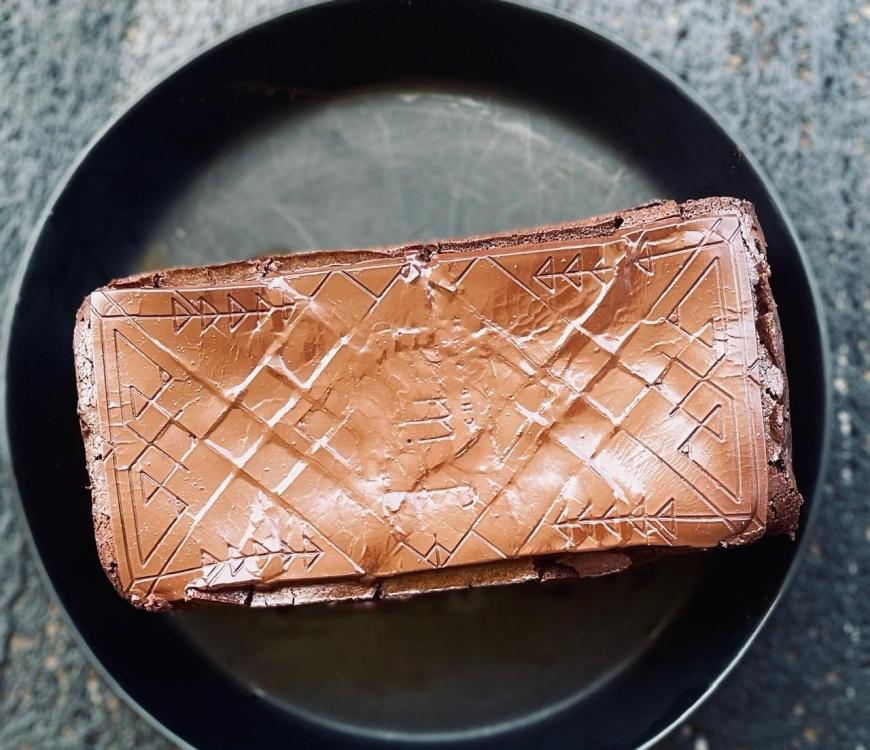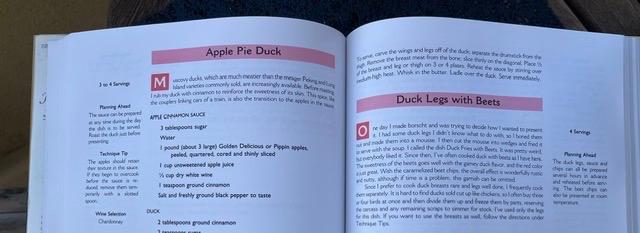
AAQuesada
participating member-
Posts
996 -
Joined
-
Last visited
Content Type
Profiles
Forums
Store
Help Articles
Everything posted by AAQuesada
-
Your Daily Sweets: What Are You Making and Baking? (2017 – )
AAQuesada replied to a topic in Pastry & Baking
material (17cm×8cm type for 2 units) 200g/50g chocolate (black/milk) *50g bar for garnish on top* 200ml fresh cream 3 eggs 50g granulated sugar recipe finely chop the chocolate (black) and add the warmed fresh cream and melt. combine the eggs and granulated sugar and mix until chewy. (ribbon stage) if there is room, put the chocolate and the temperature together in hot water. mix 1 and 2 in several divided. (batter is for 2 molds, it did all fit in my 300g matfer mold) lay a cooking sheet (line with parchment paper) on a mold and pour the dough. i like the size and quantity, but this time i shed 250 g of fabric on a 17 cm × 8 cm mold. bake in a 130-degree oven (266F) for 30-40 minutes, board chocolate (milk) on top and bake for another 15-20 minutes. when it is burnt, take the crude heat and complete it. *Translation courtesy of Microsoft edge -
Where do you purchase that from?
-
Your Daily Sweets: What Are You Making and Baking? (2017 – )
AAQuesada replied to a topic in Pastry & Baking
Is there an English version? What browser are you using? You should be able to auto translate! That's what I did, but I can post the translated recipe when I get back home . He was a 2 Michelin * Chef I gather from his bio, mostly French background and has got some interesting recipes on there. -
🥲 they have stopped making filters for the Camelbak Relay pitcher (it filtered water as it came in ame again before it left the pitcher. Love it, but my heart is broken Absent paying 55$ for a single filter on eBay it looks like I'm in the market for a new one. Anything worth looking at besides the usual Britta? What are your favorites?
-
Your Daily Sweets: What Are You Making and Baking? (2017 – )
AAQuesada replied to a topic in Pastry & Baking
Made this mini chocolate cake with chocolate from Ritual. Recipe from https://chef-johjiro.com/2022/02/10/itachoco_cake/ -
@paul o' vendange i was thinking of getting a Ducasse book any suggestions on which one? Was looking mostly at Nature or Bistro but can be talked into one of the others!
-
mesmerizing! she's got skills. I knew you could do it off of a board but i didn't know what it entailed. wow
-
-sugar (raises the temperature for coagulation) https://www.incredibleegg.org/professionals/manufacturers/real-egg-functionality/coagulation-thickening Don't know if this helps, but it seems there are several scientific papers on the subject as well
-
Score! For me Saveur had the best recipes of any of the food mags and well written long articles. Have you been to Le Cirque?! that's awesome to find a signed copy, wow.
-
German is beyond my ken but but I'm definitely interested in any great deals on French or Spanish language books! That looks fantastic 😻
-
Another New to me book - this one a previously owned Michel Richard book bought at Now Serving in LA when I went to get my Pie book signed by Chef Calum (not sure why certain pictures change orientation when posted??)
-
Yes Joyce!
-
The closest one is 22 miles away, darn! But it's definitely on my list of places to check out now!
-
Where did you see them ? Never had the Poulet Rouge but I do know someone getting a case, so i'm curious to hear how they taste as the price seems reasonable. My current fav is the Cooks Venture / TJ's heirloom bird. Our Farms (cooksventure.com)
-
Just double checking -should that be 300 g water?
-
My bad i should have tagged @Owtahear who responded to a comment about David Rosengarten's Dean and DeLuca cookbook
-
It really is a great cookbook!
-
@Chris Hennes Maybe if you used the frisee you could have heavier on the Green goddess? or even have some on the side to dip a la ranch dressing. Just a thought -it looks like a tasty tartine
-
Duck does have almost 70% more fat than chicken. What works for duck might not work for Chx.
-
Can we not be honest? The chicken skin is not going to stay crispy. It doesn't even like to stay crispy when it's rosted. Unless you take the skin off and make a chip. Flabby chicken skin is delicious too! With moist meat and luscious braising liquid, come on, that's greAt!
-
'Grape jelly' ¿aioli?!
-
Nancy Silverton's sandwich book called 'Nancy Silverton's sandwich book'!
-
What are the best Hotel Room Service type cookbooks?
AAQuesada replied to a topic in Cookbooks & References
Club sandwiches, burgers from frozen patties, chicken tenders? that is what i think of when i think of hotel room service, is that what you mean? -
I have to say i'm really digging French Lessons by Aussie Chef Justin North. Picked it up for less than 5 used and it reallly covers all the basics of modern French cuisine in an easy to understand manner and would def recommend it for anyone wanting to put together composed plates.






